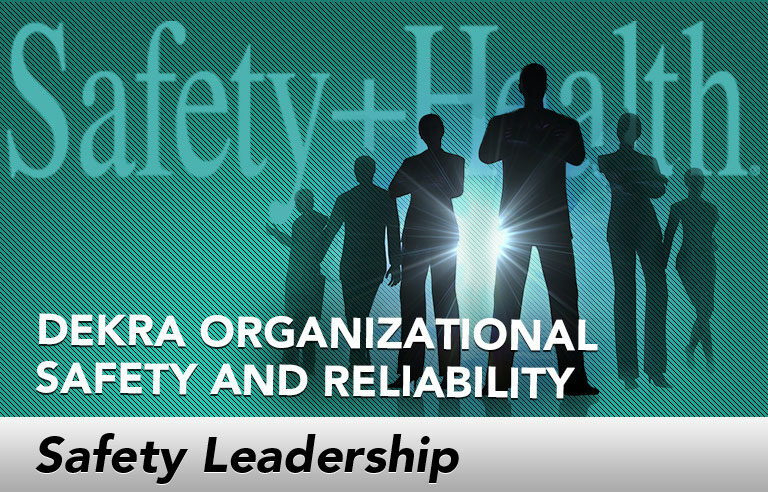Safety Leadership: 11 characteristics of great safety performers

Editor’s Note: Achieving and sustaining an injury-free workplace demands strong leadership. In this monthly column, experts from global consulting firm DEKRA Insight share their point of view on what leaders need to know to guide their organizations to safety excellence.
Across industries, the best performers in safety sustain outcomes others struggle to reach. What sets them apart can be attributed to 11 leadership characteristics that are practiced consistently – regardless of challenges. These characteristics are fundamental in ensuring a culture that supports safety improvement and maintains the right behaviors over time.
- Great safety performers are absolutely clear that safety is a personal value to them, even to the point of overriding the company position. To lead safety well, you have to make it personal. People know when you’re going through the motions. If they don’t think you care about safety, why should they? Great safety leaders are forthright about their commitment to safety.
- Great safety leaders relentlessly drive the message in all they do. For these leaders, safety is not an “and” message. It is a deep value – the first thing they talk about and the issue that influences all decisions.
- Great safety performers are present in the field on a regular basis. “In the field” means all the way to the front lines. They support safety systems and procedures by wearing the proper protective equipment in the work area, following the safety guidelines put into effect and modeling desired behaviors.
- Great safety performers identify artifacts that indicate the climate and culture of the organization. They educate themselves on the mindset of the people at the coalface, and they drive the message that employee safety is the organization’s priority.
- Great safety performers expect subordinates to match their same level of focus and action. These leaders probe to understand how the organization is changing the culture and what it’s doing to improve the safety climate. They ask the right questions to get people to think and apply initiative to safety improvement.
- World-class safety performers understand that aligning resources with objectives is critical. They articulate a vision that specifies desired behaviors for employees at every level and define actionable and manageable steps for getting there. With each step, they ensure they have the people, financing and resources needed to succeed.
- Strong safety performers ensure they are aligned with subordinates on what they need to do to support them. They coach and mentor employees, and provide them with the training, resources and assistance needed to achieve their goals. They work collaboratively with their people to get the most out of their performance.
- Great safety performers actively seek feedback on their safety leadership behaviors. Leaders’ actions and words often are perceived differently than intended. That’s why feedback is an important tool for improvement. Without feedback, leaders don’t know whether their well-meaning leadership actually is undermining the safety effort. Leadership is an art anyone can learn.
- World-class safety performers drive the focus on proactive exposure reduction. They understand that exposure – not injury – is the best indicator of safety performance. They enable workers to recognize when exposure is changing and take action to eliminate the risk in real time.
- Great safety performers actively ensure alignment between their company and contractor leadership. They address the issue of contractor safety in a surprisingly simple and direct way: They treat contractors like everyone else. They take the position that human life – regardless of the badge you wear – is sacred.
- World-class safety performers have a deep understanding of the activities their organizations are undertaking and demonstrate active support. They know the direction the company is headed, the process they’re engaged in, and the ways they can bolster performance and lead people. They take action on safety issues and demonstrate a sense of urgency for safety.
This article represents the views of the author and should not be construed as a National Safety Council endorsement.
 Jim Spigener is chief client officer for DEKRA Insight. A highly sought-after speaker, Spigener advises senior leaders around the globe on safety performance. He currently is writing a book on behavior-based safety that is scheduled for publication in 2017.
Jim Spigener is chief client officer for DEKRA Insight. A highly sought-after speaker, Spigener advises senior leaders around the globe on safety performance. He currently is writing a book on behavior-based safety that is scheduled for publication in 2017.
Direct to your inbox: Sign up to be notified in email about new "Safety Leadership" columns.
To display the infographic on your website or blog, copy the embed code below. Paste it into the HTML source view of your page in the position where you want the graphic to appear. It should size itself to fit your content container width.

Post a comment to this article
Safety+Health welcomes comments that promote respectful dialogue. Please stay on topic. Comments that contain personal attacks, profanity or abusive language – or those aggressively promoting products or services – will be removed. We reserve the right to determine which comments violate our comment policy. (Anonymous comments are welcome; merely skip the “name” field in the comment box. An email address is required but will not be included with your comment.)

